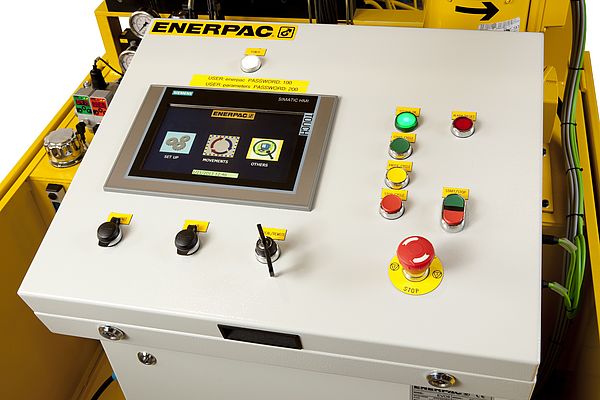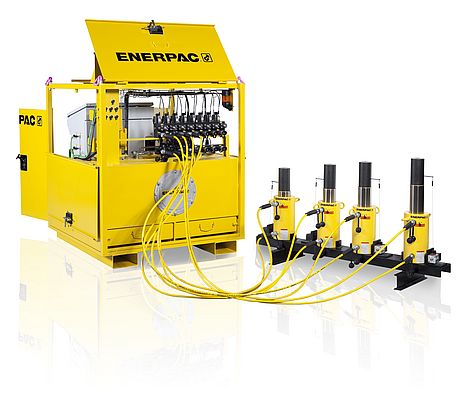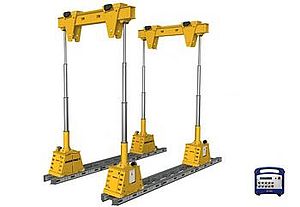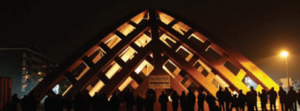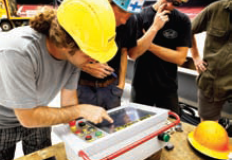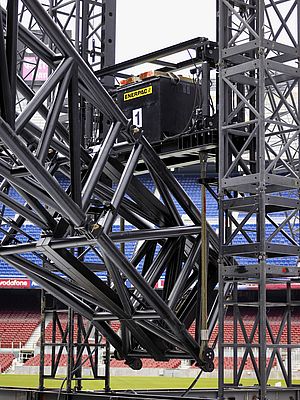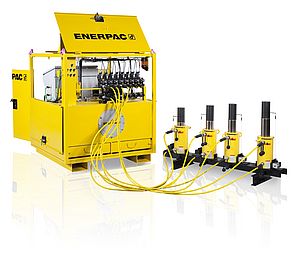The new generation of Enerpac's multifunctional synchronous lifting system is the EVO-system. The EVO-system is now available for everyone who needs assistance with critical lifting application. By combining the incredible strength of high pressure hydraulics with the high-speed of today's PLC-controlled systems, Enerpac has the expertise to accurately and safety lift the largest and unique structures on earth.
Via the integrated touch screen the hydraulic movements and cylinder positions can be monitored and controlled during the lifting procedure with visual real-time on screen representation. Besides monitoring, the Enerpac synchronous lifting technology manages lifting, lowering, weighing, alignment and load transfer procedures of non-uniformly distributed loads. All managed by a single operator from a central control position.
A major advantage of the EVO-system is the ability to use all kinds of existing standard Enerpac cylinders. Depending on the capacity needed, 50 ton single-acting RC-Series general purpose cylinders or 1500 ton High Tonnage Cylinders can be applied. Even combinations between different cylinder capacities can be made.
Prado Museum foundation lifted and monitored with high pressure hydraulics
The intelligent EVO-system has been used during the extension of the exhibition space of the Prado Museum in Spain. The foundation needed support and precise movement measuring during reconstruction, caused by surrounding buildings and traffic. The movement was measured by the EVO-system and the foundation was supported by CLRL-Series Lock Nut Cylinders.
The decision was made to use CLRL-5004 Lock Nut Cylinders because of their 0,1% accuracy. In total 34 double-acting lock nut cylinders, each with 500 ton lifting capacity and 100 mm stroke have been used. Lock Nut Cylinders can be synchronized on their plunger stroke or load. When unsafe use is detected by the EVO-system a signal will be provided, and the emergency button can be used.
After realization of the reconstruction of the museum the foundation support by the cylinders was removed. The reconstructed and surrounding buildings and roads were unharmed. The museum was reopened successfully.


